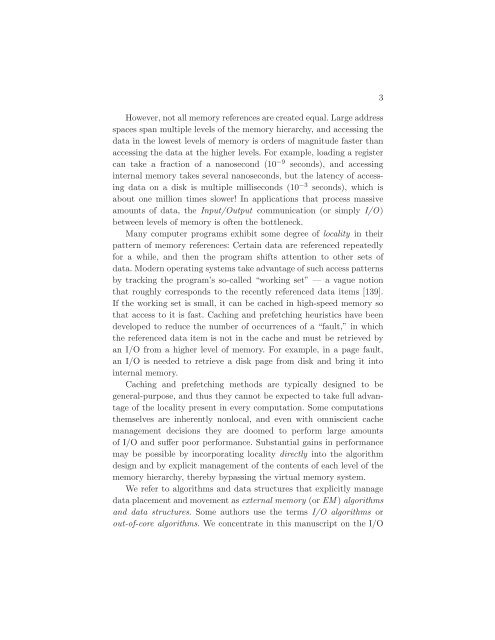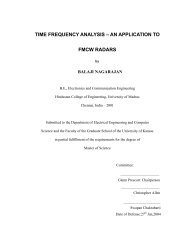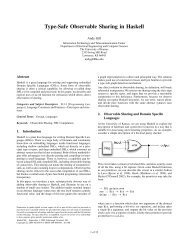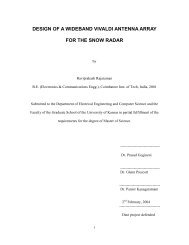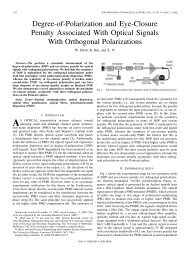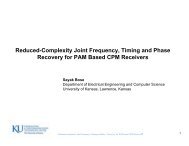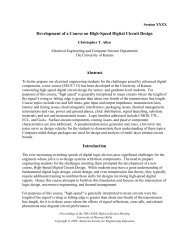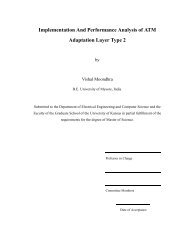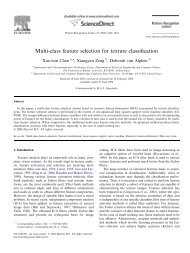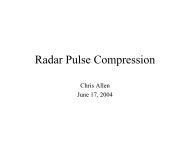Algorithms and Data Structures for External Memory
Algorithms and Data Structures for External Memory
Algorithms and Data Structures for External Memory
Create successful ePaper yourself
Turn your PDF publications into a flip-book with our unique Google optimized e-Paper software.
However, not all memory references are created equal. Large address<br />
spaces span multiple levels of the memory hierarchy, <strong>and</strong> accessing the<br />
data in the lowest levels of memory is orders of magnitude faster than<br />
accessing the data at the higher levels. For example, loading a register<br />
can take a fraction of a nanosecond (10 −9 seconds), <strong>and</strong> accessing<br />
internal memory takes several nanoseconds, but the latency of accessing<br />
data on a disk is multiple milliseconds (10 −3 seconds), which is<br />
about one million times slower! In applications that process massive<br />
amounts of data, the Input/Output communication (or simply I/O)<br />
between levels of memory is often the bottleneck.<br />
Many computer programs exhibit some degree of locality in their<br />
pattern of memory references: Certain data are referenced repeatedly<br />
<strong>for</strong> a while, <strong>and</strong> then the program shifts attention to other sets of<br />
data. Modern operating systems take advantage of such access patterns<br />
by tracking the program’s so-called “working set” —avague notion<br />
that roughly corresponds to the recently referenced data items [139].<br />
If the working set is small, it can be cached in high-speed memory so<br />
that access to it is fast. Caching <strong>and</strong> prefetching heuristics have been<br />
developed to reduce the number of occurrences of a “fault,” in which<br />
the referenced data item is not in the cache <strong>and</strong> must be retrieved by<br />
an I/O from a higher level of memory. For example, in a page fault,<br />
an I/O is needed to retrieve a disk page from disk <strong>and</strong> bring it into<br />
internal memory.<br />
Caching <strong>and</strong> prefetching methods are typically designed to be<br />
general-purpose, <strong>and</strong> thus they cannot be expected to take full advantage<br />
of the locality present in every computation. Some computations<br />
themselves are inherently nonlocal, <strong>and</strong> even with omniscient cache<br />
management decisions they are doomed to per<strong>for</strong>m large amounts<br />
of I/O <strong>and</strong> suffer poor per<strong>for</strong>mance. Substantial gains in per<strong>for</strong>mance<br />
may be possible by incorporating locality directly into the algorithm<br />
design <strong>and</strong> by explicit management of the contents of each level of the<br />
memory hierarchy, thereby bypassing the virtual memory system.<br />
We refer to algorithms <strong>and</strong> data structures that explicitly manage<br />
data placement <strong>and</strong> movement as external memory (or EM ) algorithms<br />
<strong>and</strong> data structures. Some authors use the terms I/O algorithms or<br />
out-of-core algorithms. We concentrate in this manuscript on the I/O<br />
3


